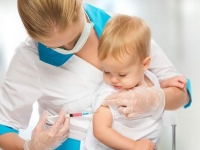What Is Haemophilus Infection? What kind of dangerous illness does it cause?
 Hemophilic infection is an infection caused by a type B bacillis, hence it has another name – Hib (abbreviation for Haemophilus influenzae type b). This infection can be the cause of many acute illnesses that lead to severe consequences or even death.
Hemophilic infection is an infection caused by a type B bacillis, hence it has another name – Hib (abbreviation for Haemophilus influenzae type b). This infection can be the cause of many acute illnesses that lead to severe consequences or even death.
Hemophilic infection affects mainly the respiratory organs, the central nervous system, provokes purulent cells in various organs. The bacterium is localized in the nasopharynx and transmitted by airborne droplets. A person can only be a carrier and a transmitter of the disease, without being personally ill. Bacteria Hibs present in the nasopharynx about 75% of completely healthy children and adults.
What diseases causes a hemophilic infection?
Hemophilic infection causes very serious illness, especially it is dangerous for newborns and preschool children. These diseases include:
meningitis;
sepsis;
pneumonia;
pericarditis;
septic arthritis;
skin infection on subcutaneous tissues;
infection to the epiglottis;
osteomyelitis (bone infection).
Symptoms that Hib turns out to be
The general and first symptom is an increase in body temperature. Others depend on which organ has infected an infection. The main symptoms of Hib following:
fever;
cough, shortness of breath, heaviness in the chest;
wheezing, increased sputum secretion;
salivation, throat edema;
redness of the skin, itching, irritation, excessive sensitivity of the skin;
joint swelling, severe pain, difficulty moving, swelling;
ear infections that cause severe earache;
stiff neck muscles;
changes in human behavior (inhibitory reactions or, conversely, excessive excitement).
The severity of complications from hemophilic infection. Hib treatment
The most severe form of Hib-purulent meningitis (inflammation of the mucous membrane of the brain and spinal cord). This disease is very difficult to treat, because its pathogen is resistant to antibiotics (about 20-30% of hemophilic sticks are insensitive to most antibacterial drugs). Mortality in severe forms of meningitis is high – up to 16-20%.
If even a man managed to save, this does not mean that there will be no consequences. One third of patients who have undergone hemophilic meningitis develop irreversible neurological complications, such as convulsions, delayed neuro-psychological development, hearing loss, vision, and the like.
Other diseases caused by Hib bacteria, such as pneumonia, sepsis, purulent arthritis, etc. are also very dangerous. They also have very serious complications that remain with the person throughout their lives.
Vaccination from hemophilic infection
In 2008, WHO contributed to the introduction of immunization against Hemophilus sticks in 136 countries around the world at the national level. The effectiveness of the Hib vaccine is estimated at 95-100%. Vaccinations have yielded tangible results: in 10 European countries, in Australia and Israel, Hib infection in the year of the introduction of general vaccination developed only in 2 people from 1 million.
To date, vaccination is the only way to protect against hemophilic infection. Vaccinations from Hib are included in the Preventive Vaccine Calendar, agreed at the state level. It is necessary to vaccinate a child three times: in 2 months, in 4 months and in 1 year. Only this way can it provide reliable protection against Hib.
Hemophilic infection is the cause of terrible and sometimes incurable illnesses, the consequences of which a person can feel for a lifetime. In order to protect your child from fatal consequences, it is necessary to vaccinate it in a timely and correct manner.



